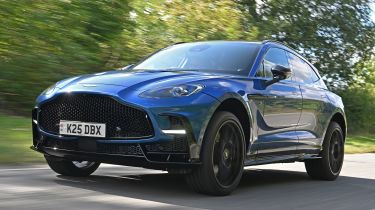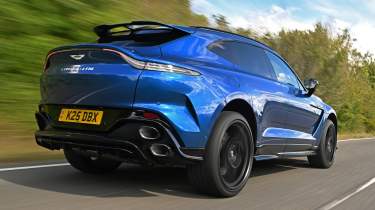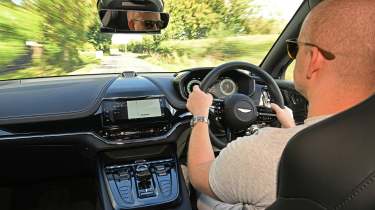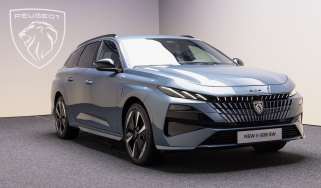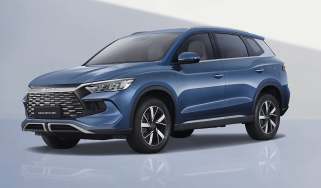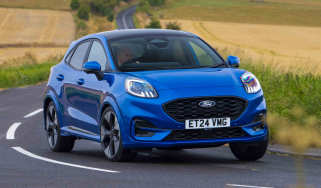New Aston Martin DBX S 2025 review: an astounding hot SUV
The 717bhp Aston Martin DBX S offers the perfect blend of comfort and speed

Verdict
It’s easy to question the sanity of a 717bhp, two tonne-plus SUV, but viewed purely as a technical achievement, what the Aston Martin DBX S is capable of is nothing short of astounding. Speed, handling, luxury and practicality, it manages to offer a blend of all of the best hot SUV qualities in a way that stands up really robustly against anything else available for the money – or even more. You’ll need to spend more to get all of the best lightweight bits, although we’re not sure the majority of buyers would be able to notice the difference that they make to the driving experience.
The name ‘707’ certainly has a nice ring to it, so it seemed a fitting choice for the range-topping version of the Aston Martin DBX. When that number is taken from a car’s metric horsepower, it’s a pretty wild name to have, too.
But now, the 707 has been upstaged by this: the new DBX S. Less dramatic sounding, sure, but the S carries more weight in the marque’s history, sitting on a range of more sporting models since the Fifties. In this case, it also carries more power and - if you tick the right option boxes - less weight than the former pinnacle of Aston’s SUV, too.
Used - available now

2024 Aston Martin
DBX
5,190 milesAutomaticPetrol4.0L
Cash £132,745The power side of the equation has been taken care of by engineering know-how gathered during development of the new Valhalla. The Mercedes-AMG-derived 4.0-litre twin-turbo V8 was further updated in Aston Martin’s mid-engined supercar, gaining revised turbos with larger compressor-wheel diameters and tweaked internals. That tech has found its way into the DBX S, with the addition of a revised exhaust system complete with vertically stacked tailpipes.
The result is 717bhp. With the 707 making 697 mechanical horsepower, that's a 20bhp increase on before, gains which Aston Martin claims add a little more urgency towards the top of the rev range. Torque stands at 900Nm.
A car as large and heavy as a luxury SUV needs all the help it can get to shed a few pounds, and Aston Martin’s focus has been to trim the weight in the most useful places. Among the most striking is a carbon fibre roof. This panel, which also ditches the standard roof rails, shaves 18kg from the car’s highest point to lower the centre of gravity. Lower down, the vast 23-inch wheels can be made of optional lightweight magnesium, removing a further 19kg of unsprung mass (which allows the suspension to better control itself) relative to the standard forged aluminium items.
Add in carbon fibre for the restyled carbon fibre front splitter, side sills, and rear diffuser sections, plus a polycarbonate front grille, and the potential total weight loss comes to 47kg. That’s not exactly going to be transformative in a car that still weighs 2.2 tonnes, but it’s a step in the right direction.
The suspension set-up is unchanged, but the steering is four per cent faster than before - and brings the added bonus of trimming the turning circle by half a metre down to 12 metres. Carbon ceramic brake discs measure 420mm up front and 390mm at the back.
As you’d expect for a 700bhp-plus performance SUV, the capability here is pretty remarkable. Firstly, there’s the straight line performance, which is dramatic, incredible and relentless all in equal measure. There’s something even more surreal about a car of this size that’s able to move this quickly; more brutal than a lightweight sports car, yet no less exciting. Pull on the lovely shift paddle to the right of the steering wheel, and each the next ratio of the wet-clutch automatic transmissions engages quickly, meaning that there’s barely any let up in the surge.
While that engine started life in AMG hands, to our ears Aston Martin has taken it and made it sound better than in any Mercedes application, too. The usual, slightly hollow tone has been replaced with a fuller, richer sound, giving that evil gargle even more body. Turbochargers can often take the edge off an engine’s tone and make them a little flat, but there’s none of that here.
Fortunately, the rest of the DBX S is more than up to the task of dealing with all of that power. Firstly, there are those carbon brakes. The stopping power they offer is absurd; the whole car dives onto the front axle if you press the left hand pedal to the floor. We didn’t sample the S on track, but fade isn’t even worth considering on the road, given how much it feels like they have in reserve.
Approaching the corners and things become even more mind-bending. The DBX has always had an extremely positive front end given its height and weight, but the sharper steering and other small tweaks have made this version the most agile of the lot. The electronic tech under the skin keeps the body remarkably flat through the corners, allowing all four tyres to serve up huge grip. You are still very aware of the car’s width and its relatively high centre of mass; a Ferrari Purosangue’s chassis, for example, feels like it has more in common with a V12-powered hot hatchback than it does a high-riding SUV like this, but the Aston’s ability to cover ground is still astonishing.
And it manages to achieve all of this without harming the ride comfort. Ever since the 707 was released, the DBX has managed to pair its agility with impressive compliance, especially when the air springs are left to their more relaxing mode. That remains the case here, too; we’d need to try the S back-to-back with the 707 to see if the light magnesium wheels improve things (and by how much) but what’s clear is that the S would be a family car that nobody on board could complain about.
They’ll more likely be cooing over the quality of the interior. The finish is first-rate; the S uses more Alcantara than previous models to go along with its more driver-focused theme, although a full leather seat option can still be chosen if customers prefer. The front seats are superb, with a driving position that feels more like a jacked-up Vantage than a traditional SUV, yet there’s still a great view out. By modern standards, the touchscreen seems refreshingly modest, too, while the centre console is festooned with physical buttons that, with a little acclimatisation, can be found by feel.
For those behind, the cabin space is simply vast, as is the boot. At 638 litres, you could get a German Shepherd in there, and it’d no doubt have a great time shedding its coat all over the deep carpet.
There is plenty of competition for the DBX S, but it stands up to pretty much any of them. The previously mentioned Ferrari Purosangue is even better to drive and has the lure of a glorious V12 engine, but is nowhere near as spacious. The Range Rover Sport SV is another physics-defying SUV, but it doesn’t feel quite as pointy and agile as the Aston; it doesn’t feel any slower; merely that’s a personality trait where some buyers will prefer one over the other. The Aston’s cabin feels like a step above the SV when it comes to luxury, though. Then there’s the Bentley Bentayga, which offers a level of finish higher still, but neither rides nor handles as well.
Fancy getting your hands on an Aston Martin DBX? You can buy a used model through our Buy a Car service for as little as £120,000.
| Model: | Aston Martin DBX S |
| Price: | £217,745 |
| Powertrain: | 4.0-litre V8 twin-turbo petrol |
| Power/torque: | 717bhp/900Nm |
| Transmission: | Nine-speed auto, four-wheel drive |
| 0-62mph: | 3.3 seconds |
| Top speed: | 193 mph |
| Economy: | 19.9mpg (est) |
| Size (L/W/H): | 5,039/1,998/1,680mm |
| On sale: | Now |

